4.02.2021
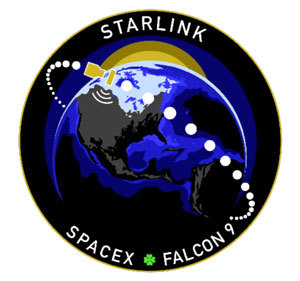
WASHINGTON — SpaceX successfully launched another set of Starlink satellites Feb. 4 in the first of back-to-back Falcon 9 launches scheduled from Cape Canaveral.
The Falcon 9 rocket lifted off at 1:19 a.m. Eastern from Space Launch Complex 40 at Cape Canaveral Space Force Station. Its payload of 60 Starlink satellites separated from the rocket’s upper stage 65 minutes later.
The rocket’s first stage landed on a droneship in the Atlantic Ocean eight and a half minutes after liftoff. The booster was on its fifth flight, having been used most recently for the launch of the Turksat 5A satellite Jan. 8.
The launch is the first of two back-to-back Falcon 9 Starlink missions from Florida. A second Falcon 9 is scheduled to launch Feb. 5 from Launch Complex 39A at the Kennedy Space Center, also carrying 60 Starlink satellites.
For a time, SpaceX planned launching both rockets Feb. 4, less than four and a half hours apart. The company said late Feb. 2 that the launch doubleheader was pending favorable weather and range approvals. While the 45th Space Wing announced Feb. 3 that it approved SpaceX’s launch plans, the company announced later that day it was delaying the launch from LC-39A, which had been scheduled for 5:36 a.m. Eastern, by a day for additional pre-launch checks.
The last time two launches took place from the Eastern Range, which includes Cape Canaveral Space Force Station and KSC, in a single day was in November 1966, with launches of NASA’s Gemini 12 mission and its Atlas Agena docking target 99 minutes apart. SpaceX proposed carrying out two Falcon 9 launches in one day in August 2020, but one of the two launches was scrubbed by weather.
This launch brings the total number of Starlink satellites in orbit to 1,022, according to statistics kept by Jonathan McDowell of the Center for Astrophysics | Harvard & Smithsonian. The company passed the milestone of 1,000 Starlink satellites launched last month, but more than 60 of those satellites have deorbited since their launches.
Quelle: SN
+++
SpaceX fires 60 Starlink internet satellites into orbit, with more set to launch Friday
Sixty more SpaceX-owned Starlink internet satellites rocketed through a moonlit winter sky over Cape Canaveral aboard a Falcon 9 launcher early Thursday, while another Falcon 9 stood on a different launch pad a few miles away to loft another 60 Starlink payloads Friday.
Nine Merlin 1D engines flashed to life and sent a rumble across Florida’s Space Coast at 1:19 a.m. EST (0619 GMT) Thursday. Hold-down clamps released to allow the 229-foot-tall (70-meter) Falcon 9 rocket to climb off pad 40 at Cape Canaveral Space Force Station.
The Falcon 9’s guidance system steered the rocket northeast from Cape Canaveral to align with planned orbital inclination of the Starlink satellites.
After surpassing the speed of sound, the Falcon 9 soared into the rarefied uppermost layers of the atmosphere and shed its 15-story first stage booster around two-and-a-half minutes into the flight. An upper stage engine ignited to continue accelerating into orbit with the 60 Starlink satellites, while the first stage — designed B1060 in SpaceX’s reusable rocket inventory — descended to an on-target landing on SpaceX’s drone ship “Of Course I Still Love You” nearly 400 miles (630 kilometers) downrange in the Atlantic Ocean.
The first stage’s landing punctuated the fifth trip to space and back for this booster, and it broke a record for the fastest turnaround between flights of a SpaceX booster, besting the previous mark of 38 days set last month.
The booster on Thursday’s mission last flew Jan. 7 with the Turksat 5A communications satellite, just 27 days ago.
The Falcon 9’s upper stage reached a preliminary orbit with the 60 Starlink satellites about nine minutes after liftoff Tuesday, then reignited its engine for one second to maneuver into a targeted orbit ranging between 155 miles and 180 miles (250-by-291 kilometers) in altitude.
The 60 Starlink satellites deployed from the rocket a little more than an hour after liftoff, while flying over the Pacific Ocean near New Zealand.
With the fresh broadband relay stations launched Thursday, SpaceX’s Starlink fleet appears to have grown to more 1,000 active satellites, according to data gathered by Jonathan McDowell, an astronomer at the Harvard-Smithsonian Center for Astrophysics who tracks global satellite and launch activity.
In total, the company has launched 1,085 satellites to date, including prototypes and failed spacecraft that are no longer in orbit.
Another 60 Starlink satellites are mounted on a Falcon 9 rocket awaiting liftoff from pad 39A, a few miles north of pad 40 at NASA’s Kennedy Space Center. That launch has been grounded several days to await better weather conditions in the offshore booster landing zone in the Atlantic Ocean.
SpaceX briefly planned to launch both Falcon 9 rockets less than five hours apart early Thursday, but the company said Wednesday afternoon that the mission from pad 39A would be pushed back until Friday morning at 5:14 a.m. EST (1014 GMT) “to allow additional time for pre-launch checks.”
SpaceX has both of its ocean-going rocket landing platforms, or drone ships, deployed in the Atlantic Ocean for the two Starlink missions.
The two missions will be the 18th and 19th dedicated Falcon 9 flights for the Starlink network, which SpaceX is building out to provide broadband internet services around the world. Thursday’s mission was SpaceX’s fourth Falcon 9 launch of the year, and the 107th Falcon 9 flight overall since 2010.
SpaceX says the Starlink network is providing preliminary low-latency internet service to users in the United States, Canada, and the United Kingdom through a beta testing program. Commercial service will begin after SpaceX has its initial network of around 1,584 satellites in orbit, including spares.
The quarter-ton Starlink satellites are built by SpaceX technicians and engineers in Redmond, Washington.
The initial block of Starlink satellites, including the 60 launched Thursday, fly in mid-inclination orbits tilted 53 degrees to the equator. The new Starlink satellites will unfurl their solar panels and activate their automated krypton ion thrusters to reach their final operating positions in the network.
Once operational, they will orbit at an altitude of 341 miles, or 550 kilometers, to provide broadband coverage over nearly all of the populated world.
SpaceX plans to launch more Starlink satellites into polar orbit to enable global coverage for maritime and aviation customers, including the U.S. military. The company has regulatory approval to launch around 12,000 Starlink satellites.
Quelle: SN
----
Update: 5.02.2021
.
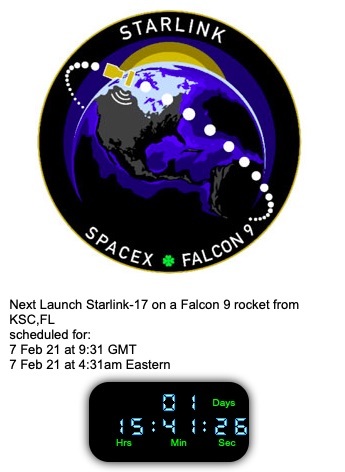
----
Update: 13.02.2021
.
SpaceX gearing up for two more Starlink missions within days
Days after SpaceX opened preorders for Starlink internet service, two more Falcon 9 rockets are set to launch from Florida’s Space Coast as soon as Sunday night and Wednesday morning — weather permitting — to help push the network closer to commercial operations.
The next two Starlink missions, expected to loft around 60 satellites each, will fly on Falcon 9 rockets from two different launch pads.
Next in line is a Falcon 9 launch from pad 40 at Cape Canaveral Space Force Station scheduled for 11:21 p.m. EST Sunday (0421 GMT Monday). SpaceX is readying another Falcon 9 for blastoff from pad 39A, a few miles to the north at NASA’s Kennedy Space Center, as soon as 12:55 a.m. EST (0555 GMT) Wednesday)
The launch set for Wednesday has been delayed several times since late January, most recently to allow time for “additional inspections” on the rocket, according to SpaceX. The launch Sunday night was previously scheduled for Saturday night.
The weather outlook is iffy for both missions’ instantaneous launch opportunities, with a 40 percent chance of acceptable conditions expected at Cape Canaveral on Sunday night, when forecasters predict cloud cover, showers, and thunderstorms across the Space Coast. There’s a 70 percent probability of good weather for the launch from pad 39A early Wednesday, according to the U.S. Space Force’s 45th Weather Squadron.
After launching toward the northeast from Florida, the Falcon 9s will deliver their payloads to orbit several hundred miles above Earth, at an inclination of 53 degrees to the equator. SpaceX aims to recover the first stage booster from both missions using the company’s two drone ships dispatched into the Atlantic Ocean.
The launches Sunday and Wednesday will come less than two weeks after SpaceX’s most recent Starlink mission, which delivered 60 satellites to orbit Feb. 4 from Cape Canaveral. They will be the 19th and 20th batches of Starlink satellites launched on dedicated Falcon 9 missions since May 2019.
SpaceX has more than 1,000 satellites in its Starlink constellation, well on the way to finish deployment of its initial tranche of 1,584 Starlink stations later this year. SpaceX won’t stop there, with plans to launch additional orbital “shells” of Starlink satellites into polar orbit to enable global coverage, with a first-generation fleet totaling some 4,400 spacecraft.
Built by SpaceX technicians in Redmond, Washington, the Starlink satellites weigh about a quarter-ton each, and they launch stacked inside the Falcon 9 rocket payload shroud.
The Federal Communications Commission has authorized SpaceX to eventually operate up to 12,000 Starlink satellites.
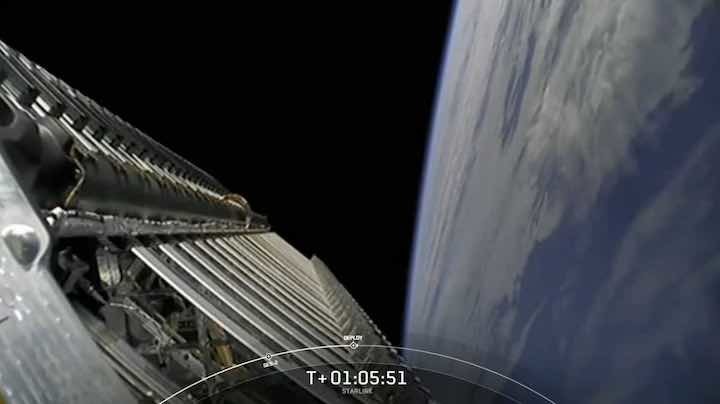
SpaceX began accepting preorders from would-be Starlink users this week, charging $99 for a potential customer to get in line for the broadband service. Once confirmed, customers will pay $499 for a Starlink antenna and modem, plus $50 in shipping and handling, SpaceX says. A subscription will run $99 per month.
SpaceX says the service should be available throughout the United States later this year.
Beta testing of the Starlink network has been underway for months in the northern United States, Canada. SpaceX said more than 10,000 users in the United States are abroad are already on the Starlink service, according to a Feb. 3 regularly filing with the FCC.
“Starlink continues to improve as SpaceX deploys additional infrastructure and capability, averaging two Starlink launches per month, to add significant on-orbit capacity alongside activation of additional gateways to improve performance and expand service coverage areas across the country,” SpaceX wrote in the filing.
Elon Musk, SpaceX’s founder and CEO, tweeted Tuesday that SpaceX’s Starlink subsidiary will go public once it has a predictable cash flow.
“Once we can predict cash flow reasonably well, Starlink will IPO,” Musk tweeted.
Until then, SpaceX will be spending cash at a high rate to maintain the Starlink network’s high-tempo deployment, from satellite launches at an average pace of every couple of weeks to the manufacturing of user ground terminals. SpaceX has said the entire project could cost more than $10 billion, but Musk has said the revenue opportunities are even higher, providing resources for SpaceX to advance its audacious plans to send people to Mars.
“SpaceX needs to pass through a deep chasm of negative cash flow over the next year or so to make Starlink financially viable,” Musk tweeted. “Every new satellite constellation in history has gone bankrupt. We hope to be the first that does not.”
The FCC awarded SpaceX nearly $885 million in government subsidies in December through a program aimed at expanding broadband access for rural Americans.
Quelle: SN
----
Update: 14.02.2021
.
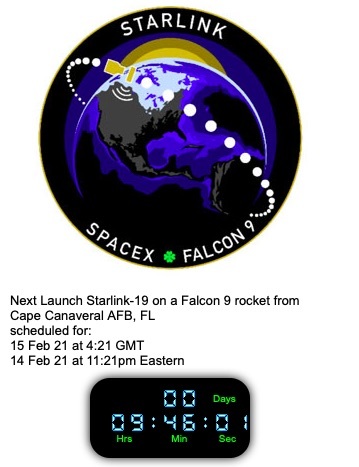
+++
Updates: SpaceX scrubs Starlink launch from Florida due to weather
Update (10:45 p.m. Sunday, Feb. 14): Scrub! SpaceX called off this mission just as fueling was set to begin due to unfavorable weather conditions. The next attempt is currently set for 10:59 p.m. Monday, Feb. 15. Come back to this page then to follow live.
Watch live above and join our live chat below as SpaceX targets 11:21 p.m. ET for the launch of a Falcon 9 rocket from Cape Canaveral Space Force Station in Florida.
Packed into the payload fairing for this mission is a batch of 60 Starlink satellites, marking the company's 19th to date. Falcon 9's first stage booster will target a landing on the Of Course I Still Love You drone ship after liftoff.
Quelle: Florida Today
----
Update: 16.02.2021
.
Start von SpaceX’s 17th Starlink v1.0 mission and 18th Starlink
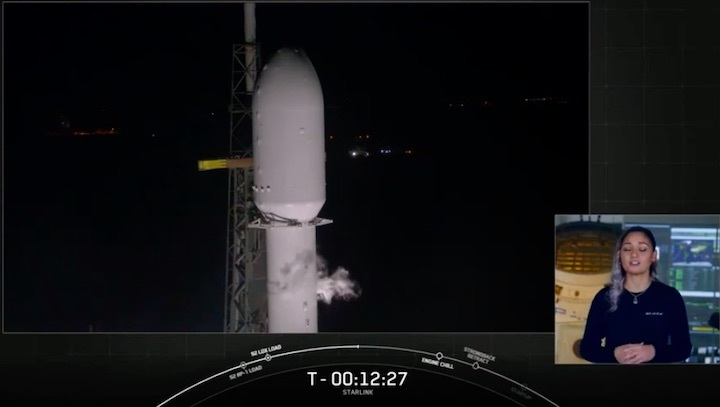
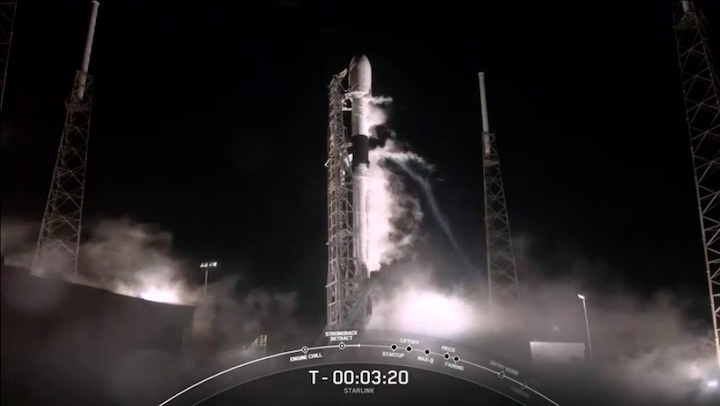
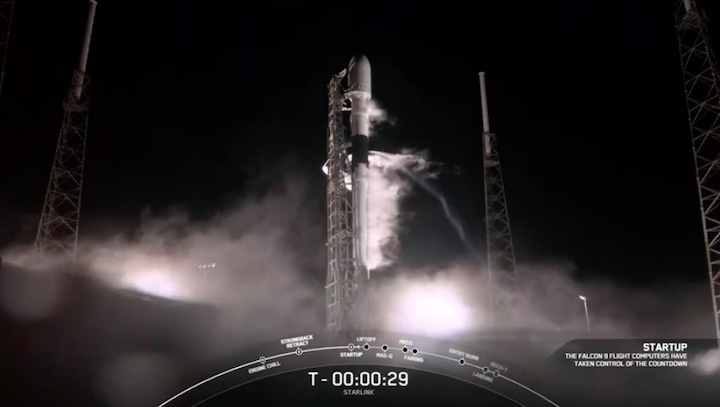
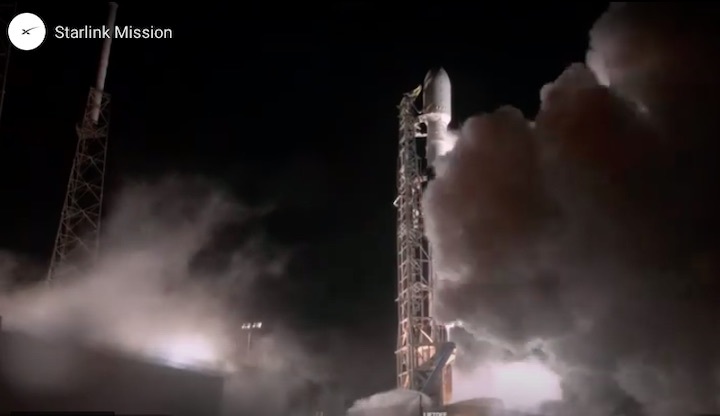
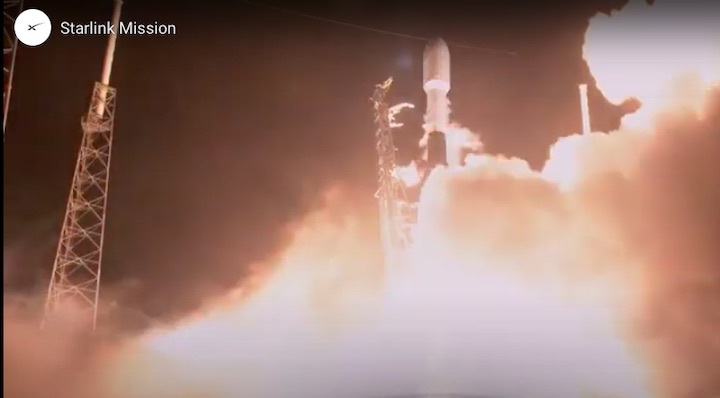
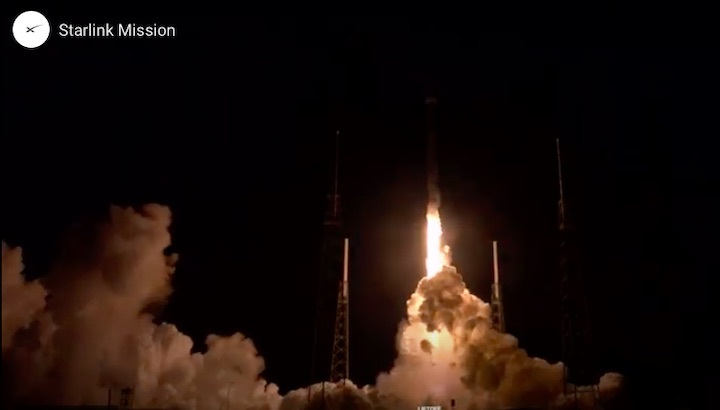
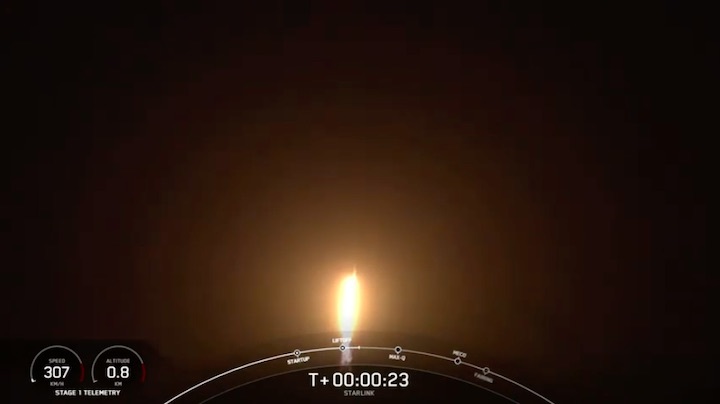
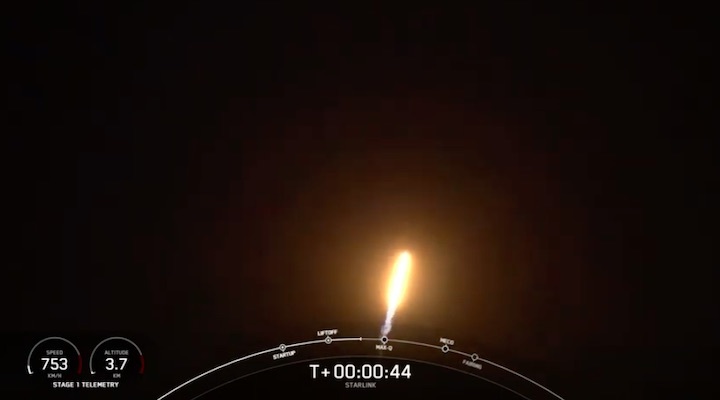
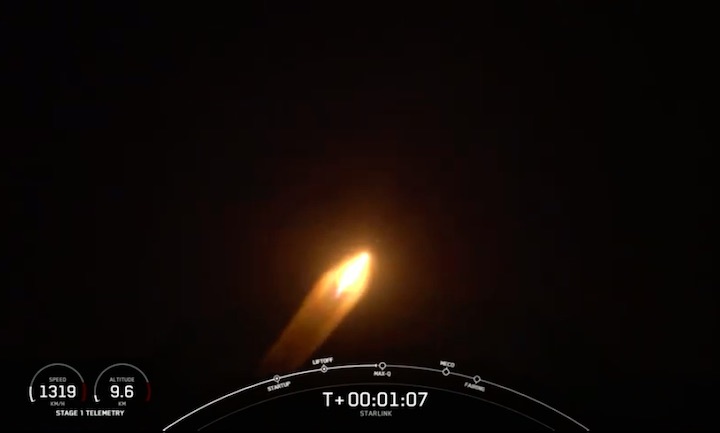
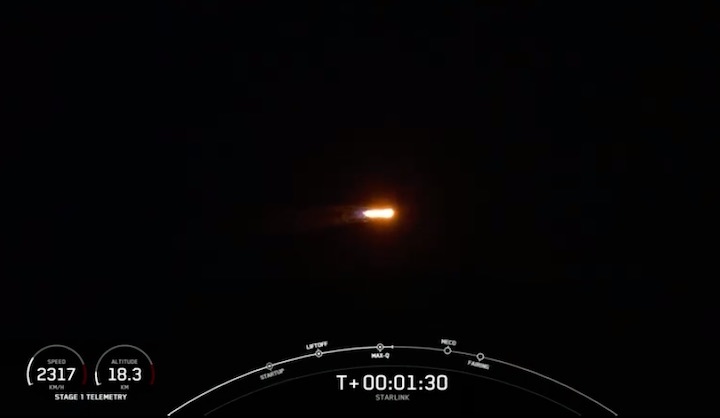
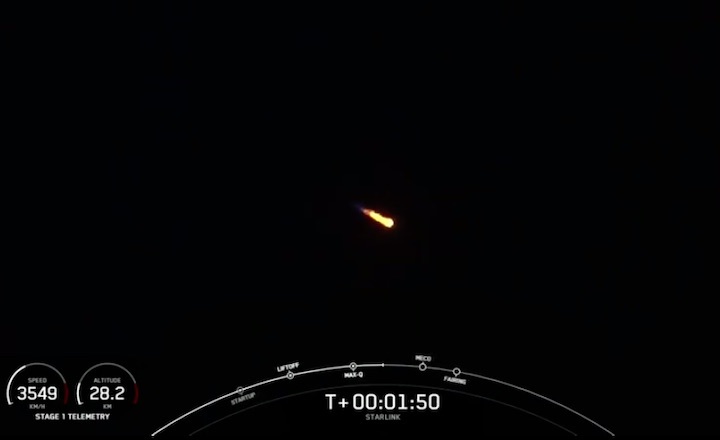
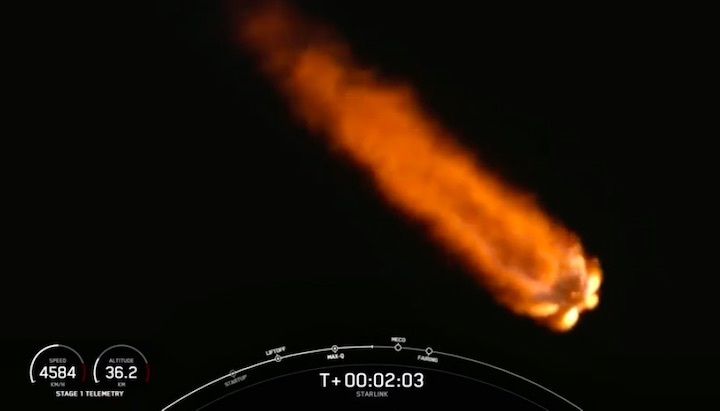
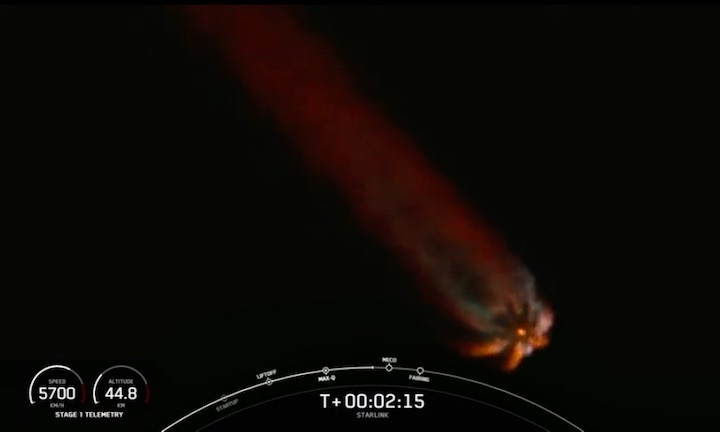
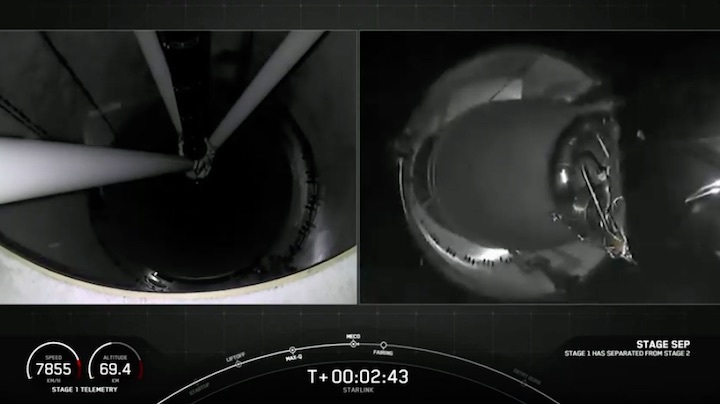
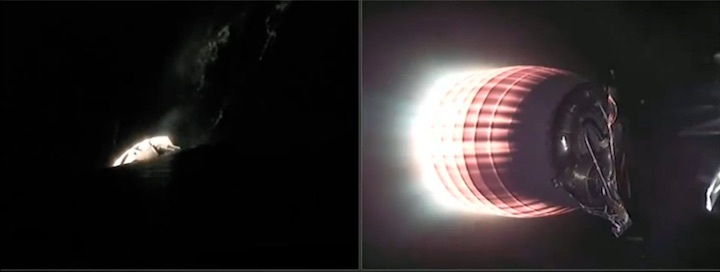
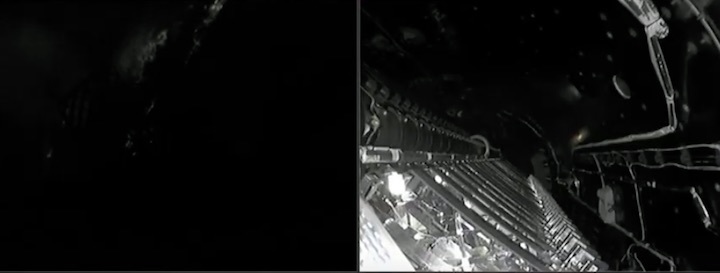
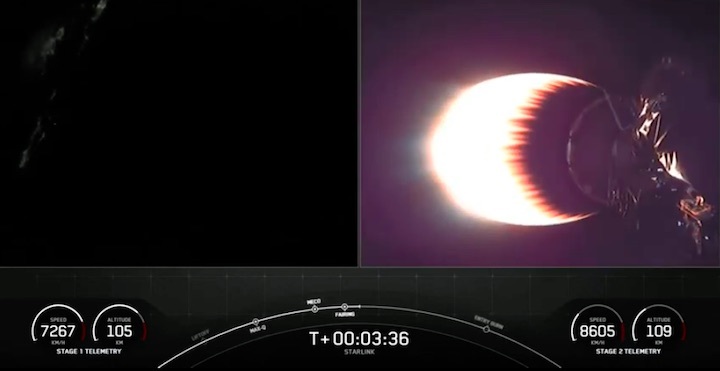
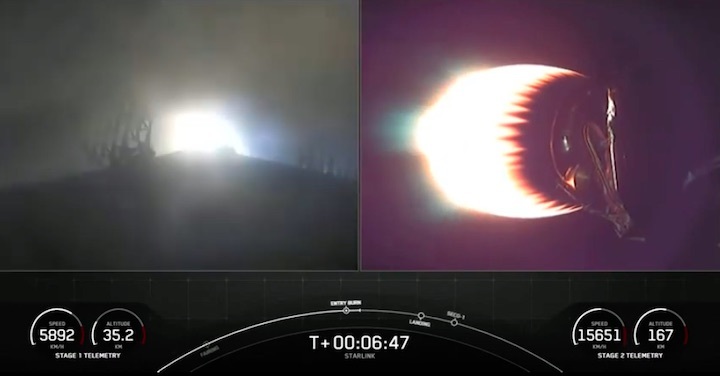



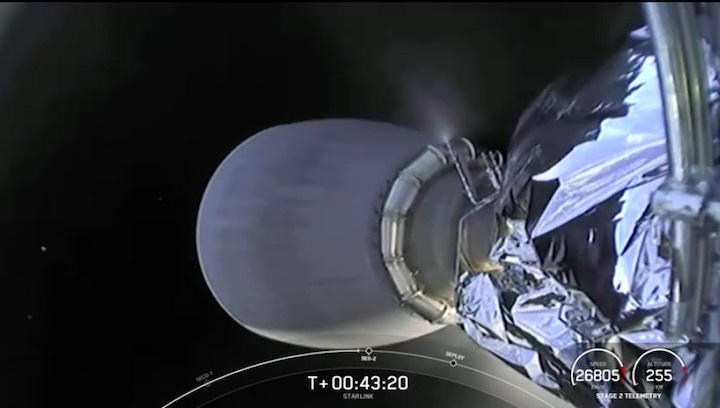
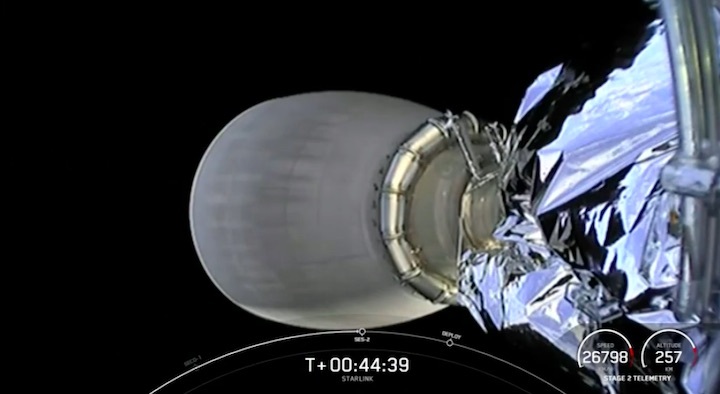
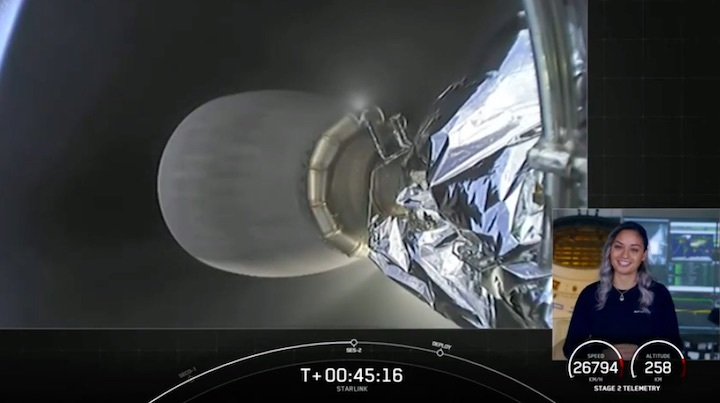
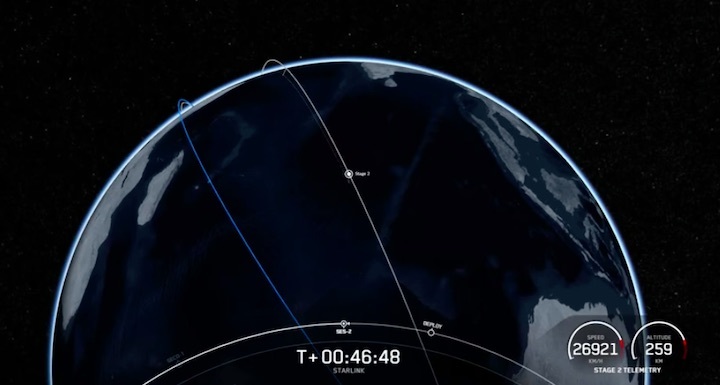
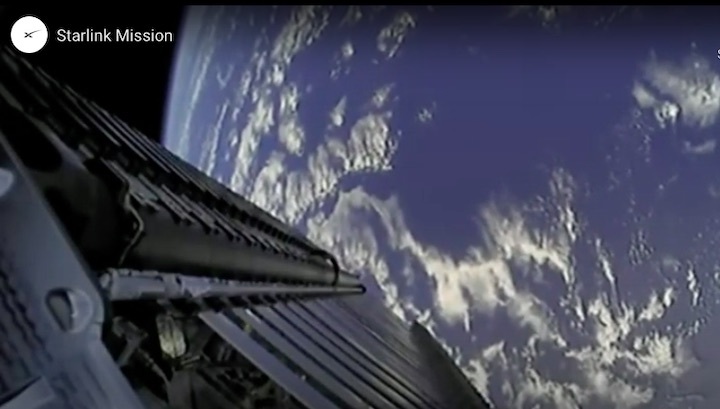

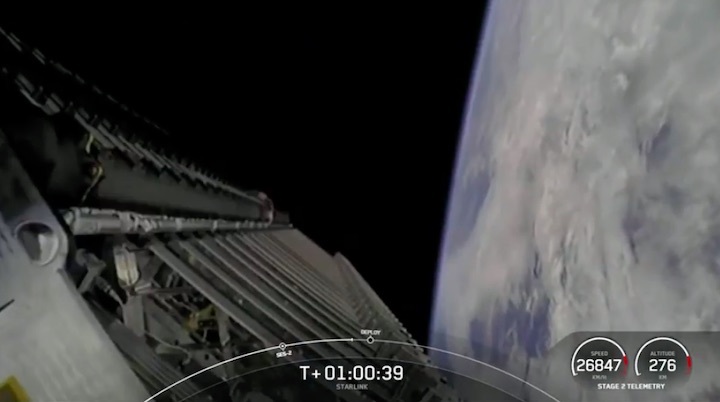
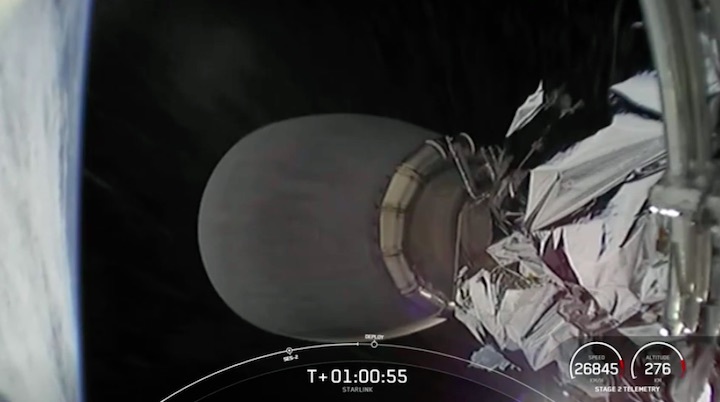


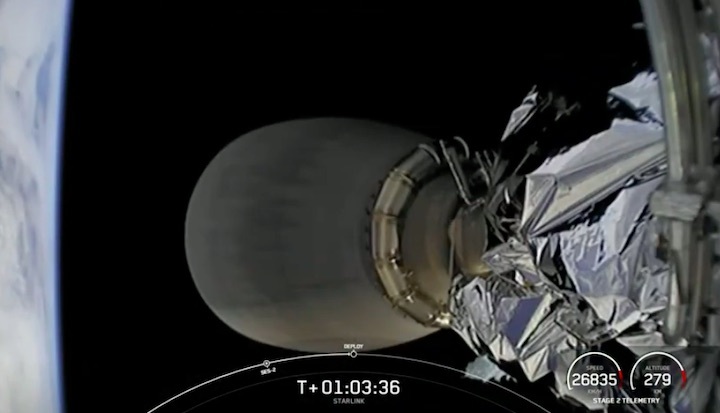
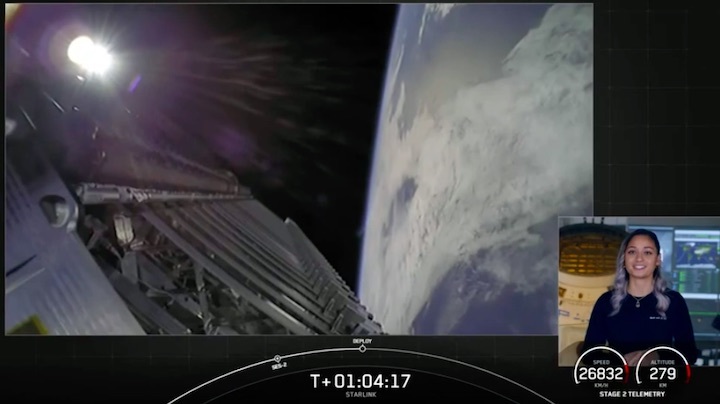
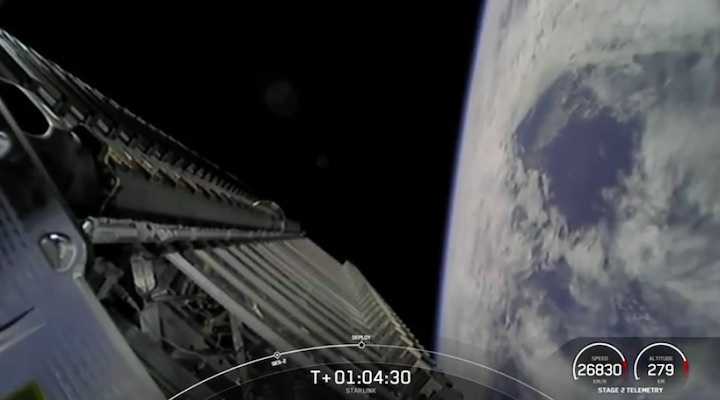
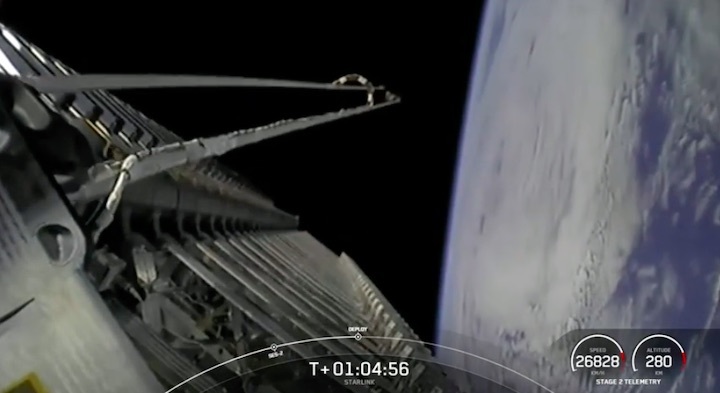
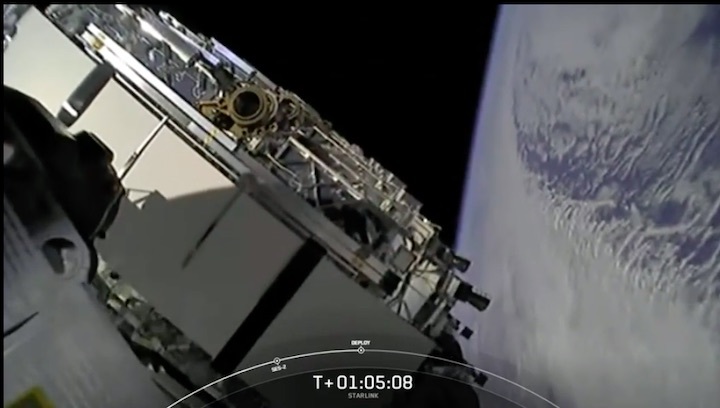
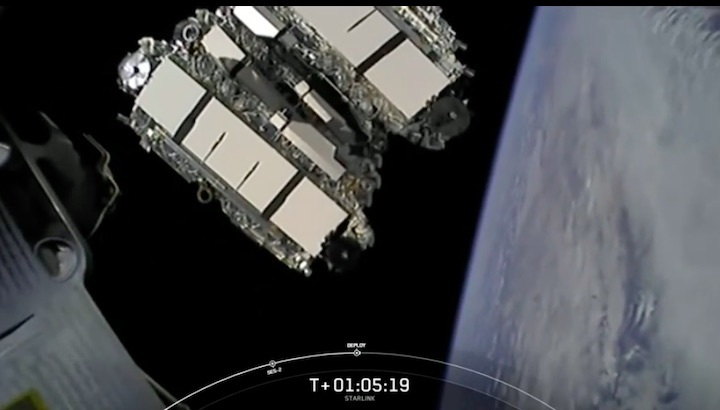
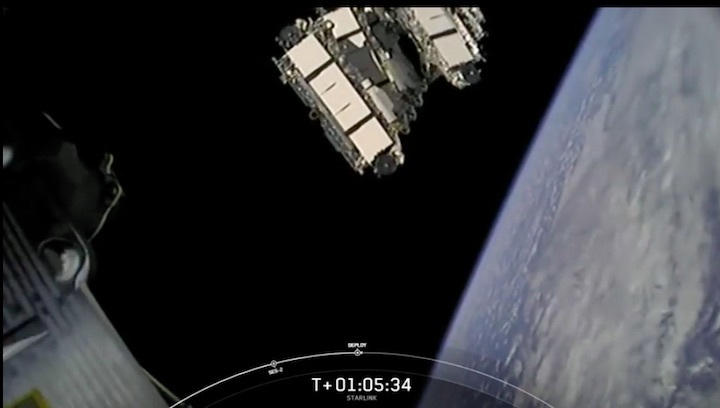
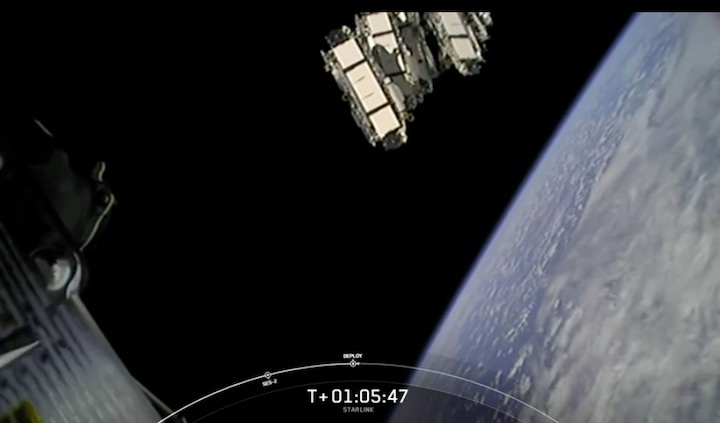
Quelle: SpaceX
+++
SpaceX launches Starlink satellites from Florida, but booster lost during landing
A SpaceX Falcon 9 rocket flew from Cape Canaveral Space Force Station on its sixth and final mission late Monday, successfully delivering 60 Starlink satellites to orbit but failing to land on its designated drone ship.
Thunderstorms rolled away from the Cape just in time for the 230-foot rocket to clear the towers at Launch Complex 40, kicking off a 64-minute mission to low-Earth orbit. The 10:59 p.m. launch marked the second attempt, the first of which on Sunday was scrubbed due to weather.
Eight minutes after liftoff, Falcon 9's first stage appeared to suffer engine-related issues as it approached the Of Course I Still Love You drone ship northeast of Florida, eventually ditching into the Atlantic Ocean. SpaceX did not clarify what went wrong, but the company's live webcast showed a glimpse of flames in the distance beyond the ship.
Booster recoveries, especially well-used vehicles that have seen several flights, are secondary missions for SpaceX. The overall mission was declared a success when the internet-beaming Starlink satellites entered the correct orbit about an hour later.
The landing failure marked the first time since March 2020 that SpaceX lost a first stage.
At Kennedy Space Center's pad 39A, meanwhile, teams aren't slowing down. Yet another Falcon 9 rocket with yet another batch of 60 Starlink satellites is currently slated to launch at 12:55 a.m. Wednesday, the opening of an instantaneous window.
If everything stays on track, the previously flown rocket will attempt to land on the Just Read the Instructions drone ship, which is also stationed in the Atlantic. The Space Force expects 80% "go" conditionslate Tuesday into early Wednesday.
Quelle: Florida Today
